 Your new post is loading...
 Your new post is loading...
What You Can Learn From Profitable New Media Companies.... It ain’t easy being in the media business these days, or so they say. There are in fact lots of people allegedly, or actually, raking in digital dollars, according to this article from Fortune. They’re all content producers with a journalistic twist. They are all different in their own ways, but you can parse out some ingredients for financial success in the industry. Not surprisingly the top, profitable companies are: The Huffington Post, Gawker Media, The Awl, Business Insider, SAY Media, Vox Media, and BuzzFeed. So what sets them apart?...
Guardian digital development editor Joanna Geary answers some questions about GuardianWitness.... ...First up: this was built in two months. The sponsorship pot from EE gave them a budget and time to get the job done, but not necessarily have everything they wanted at launch. She says it's a complete, working system that can be built upon. I suggest the phrase "minimum viable product" to Jo but she suggests that it's a full product - one that will be built on. Do they have aspirations for more integration with social media? Yes, they do. And it's something they're looking at as the system develops. The key part of the development which is invisible to us right now is that the Guardian Witness system is deeply integrated with the Guardian's CMS. Once the content has passed through verification, it's available to the journalists, and they can insert it into a story or liveblog just by inserting an URL, which creates an embedded version of the contribution that links back to the contributor's profile. "The really exciting thing is not what you see now, but what you see when Witness is included in a story," she says. It's a tool to facilitate genuine collaborative working between the journalist and external witnesses. Jo says they'll collaborate with people on the ground, or with expert knowledge, in any way they can - and already do, via phone and other traditional methods. This adds another tool for doing that....
Terrible events such as yesterday’s bombings at the Boston Marathon have always meant “all hands on deck” for news organizations, with staffers pulled off their regular beats to contribute. But the endpoint of the newsgathering and reporting is no longer a front-page package of stories explaining — the best one can — what happened, why it happened and what might be next. Now, there is no endpoint — events are reported in real time, with stories in constant motion, and the front page is a snapshot of an organization’s reporting at the moment when the presses needed to roll. Boston was a reminder of that, and a look at what’s changing in real-time journalism. Through Twitter and various live blogs, I found myself looking over my shoulder at the Boston Globe, the New York Times, Reuters and other news organizations, and was able to make some observations and draw some conclusions....
The revival of long form writing online... The last few months has seen this trend change and have seen the revival of long form writing online. Long form content journalism and in-depth storytelling online are making a comeback. While most articles are still short and quick to read, more and more blogs are publishing long-form features of 2,000+ words, which include photos and videos and need a lot of time invested from the reader to go through it. There seems to be a growing appetite from the web audience for these kind of features as proved by the popularity and social media spread of these. A recent statistical study on what makes online content go viral has found that long form articles are shared far more often than shorter articles. Word count of a post seems very closely related to the number of shares. Just look at the success of http://longreads.com/, http://longform.org/, and social media hashtags like #longreads and #longform. Here are some very successful examples of long form articles: Michael Jordan Has Not Left The Building feature on ESPN, beautiful Snow Fall in the New York Times and several profiles on the Forbes including this one of Sean Parker....
Alternative weekly colossus Boston Phoenix cracked and fell this week, ceasing publication after 47 years. Once one of the leading alt-weeklies in the nation, the dead paper leaves behind $1.2 million in debt and roughly $500,000 in assets. ...The advertising shift from newsprint to Web is mirrored by a cultural shift. In my mind, the alt-weekly remains the perfect boredom-alleviation device. Waiting for a subway train? Pull one from your bag and it will entertain you. Your girlfriend is late for your date? The paper will keep you occupied. That beer and bag of nuts not distracting from life’s troubles as you mope on a barstool? The alt-weekly saves the day again. But even a human fossil must concede that the smartphone trumps the alt-weekly as a boredom killer. How does a wedge of newsprint compete with an affordable messaging device that ferries games, social media apps, calendars, news, feature films, scores, coupons and a library’s worth of music and reading material? Ask a young person his opinion and he’ll tell you that nothing says “geezer” like a newspaper, be it daily or alt-weekly. What’s changed, and what probably convinced the Phoenix to exit, is that the papers are no longer a 30 percent (or higher) margin business, and that lost business is not returning. Publishers who hope to survive will have to content themselves with 10 percent margins. They will have to work harder to maintain advertising categories where they still have a comparative advertising advantage, such as food and restaurants, which usually require a face-to-face meeting between an ad representative and an owner to make a sale. It’s a cliché, but I’ll toss it out there anyway: Every newspaper and website needs to compete in the events business. The smarter papers are already there, and if they’re lucky they’ll hit the jackpot the Austin Chronicle has with its decades-old SXSW business. And it doesn’t require much insight to urge alt-weekly publishers to continue building out their Web components....
If the newspaper industry had theme music in 2013, it might use “Been down so long it looks like up to me,” the much-recycled line from a 1920s blues song. For the first time since the deep recession that began in 2007, newspaper organizations have grounds for a modicum of optimism... Companies have started to experiment in a big way with a variety of new revenue streams and major organizational changes. Some of the bright opportunities – such as offering social marketing services to local businesses – are ventures too new to be measured yet industry-wide. They show signs of stabilizing revenue.... Even halting improvement in the general economy helps the industry. The double whammy of cyclical ad losses on top of secular shift to new media has considerably eased from the worst of the recession from 2007 to 2010. Auto advertising has come back, and some markets, like Miami, are beginning to see recovery in real estate and employment ads as well. All those positives, however, are for the time being mostly promise rather than performance. The most basic indicators have not turned around. The industry is little more than half the size it once was. Considerable dangers persist... So the industry entered 2013 with some positive signs but still dealing with difficult economic realities. The two biggest newspaper developments of the last year – digital paywalls and reduced print frequency – capture that odd mix of expansion and contraction now typical within the industry....
The ticking time bomb that has defined the intersection of print and digital publishing went off over the past few weeks. It’s not the fault of any executive, technology or business model. It’s simply the beginning of a new cycle of magazine content and delivery. It you love magazines, it’s all about discovery and great value right now. If you don’t like magazines, this explosion increases the chances that you just might change your mind. Think about this: We’re coming off a week in which one of the world’s biggest publishing companies (Time Inc.) tried to sell its library to another of the world’s biggest publishing companies (Meredith). The deal fell apart. And in the same week, another global giant (News Corp) announced that its newly spun-off publishing division will get a $2.5 billion cash infusion, some of which will spawn a new WSJ.Money print magazine, and some of which will go to digital newspaper publishing. This mass change, growth, and implosion is the reality for publishers over the next few years. It’s print vs. digital, and a game of survival of the fittest. Behind the scenes, some publishing executives are clinging to the vision that print will still be the best business magazine model for the right content and the right audience. And then others are seeing the dramatic changes with the long-term view that digital models will win out. This is happening faster than most people think....
When to trust a theory over hard data, why companies that try to do too much get picked apart by competitors, and why sometimes industries have to learn the same lessons over and over. ...Skok said news organizations often do study their history, but they don’t focus enough on what’s coming next. Looking at profit and loss statements every quarter emphasize a snapshot of the past; Clay’s work says no, don’t only trust that balance sheet — trust a theory to predict what will happen in the future. But the idea of running large companies based on theories over hard numbers is a tough sell, Skok said. As disruption occurs, it commoditizes layers in the value stack — what used to be a high-value-added activity, one others couldn’t easily replicate, becomes cheap and easy. In journalism, the Internet, wireless technology, and other technologies have broadened the market for information. As a result, Christensen said, everyone has access to more information than they could possibly use. But that doesn’t mean that the whole indusry has become commoditzed and profitable: Commoditization opens up opportunities in adjacent layers in the value stack, he said. What you thought was a commodity becomes more profitable and proprietary — so even as one business dies, it opens up new opportunities. He cited the example of Forbes, whose previous core business — a print magazine — has been commoditized, but which has made interesting new moves online....
|
At this point, there’s no shortage of mobile products created by newspapers. Staffs are developing general news apps, sure, but in many cases they’re also tacking on a host of more niche apps. They’re also being more thoughtful about the types of journalistic content suited for mobile consumption and the extent to which clean presentations make this content sing. The apps that resonate with me most play up the functionality of the device, are useful to readers, and give information to help citizens lead better lives on the go. Newspapers, I believe, are learning that what works on a smartphone is different than what works on a tablet. What’s a helpful app in Los Angeles is different than what passes for a helpful app in Cleveland. And a newspaper staff that understands their community is better positioned than most to make these sorts of product adjustments to suit the market. Having said that, here are my picks for best newspaper apps. I listed my selections by newspaper and then explained the particular app or apps by that publication that stand out. Some have excelled in apps that are geared toward more lifestyle topics while others have done well with more traditional news coverage. All the apps are free of charge (or free for a limited time), which goes against the business model of most papers who are starting to charge for apps of their news content....
Natural disasters, airline crashes — and yes, terrorist bombs — undercut the normalcy of everyday life by bringing death’s whammy to an unexpected place at an unforeseen time. In the hours and days following such catastrophes, journalists work to restore normalcy to the panicked population by explaining how and why the bad thing happened and how to prevent it from happening again. Reporters have been normalizing the abnormal for so long that they’ve created well-worn catastrophe templates to convey their stories. Yesterday, while covering the Boston Marathon bombing, journalists leaned hard again on those templates. First came the sputtering dispatches over radio and television about the calamity. Next up were the on-the-scene broadcast reports, frequently marred by confusion and contradiction, as the press held out hope for survivors but prepared audiences for the worst. Video of the catastrophe was converted by the cable news networks into a perpetual loop, giving the talking heads a wallpaper background to talk over (and giving new viewers just tuning in something graphic to watch)....
Every 30 seconds or so, an algorithm developed by Narrative Science produces a computer-written news story, Wired reports. The articles run on the websites of respected publishers like Forbes, as well as other Internet media powers (many of which are keeping their identities private). Niche news services hire Narrative Science to write updates for their subscribers, be they sports fans, small-cap investors, or fast-food franchise owners. And the articles don’t read like robots wrote them....
Outbrain and Taboola are paving the way in the content marketing space... These two leaders in the content marketing space or as I like to call it, AdSense for content, have a simple offering that you’ve probably seen but don’t even know about. Combined, they power the “other content you may like” next to every article on every big publication ranging from Time, Bloomberg, Rolling Stone, The New York Times, and more. Outbrain and Taboola only recently started going after the same deals. Outbrain is coming from the contextual text side, whereas Taboola comes from the videos-you-may-like side. They only recently built the other side of the offering that steps into the “others” territory. But this piece is not about comparing them to see who is better. Rather, it is about the space of content marketing, why it is the next big thing, and how you are missing out big time if you are not pushing your content into the marketplace. A little more about how the space works: you have two options as a content creator and blog/site owner. The first is to add a widget on your blog to host “other content you may like” and get paid to push people to good content. The second is to get your content pushed into the marketplace and have it appear on “other content you may like” for other outlets ranging from big to small sites. The first side you get paid, the second side you set an amount per click and a budget....
In reading the Pew Research Center's State of the News Media 2013 there were some interesting things in the sections on news magazines and digital that I thought I'd point out....
The grizzled vet and the digital native: Journalism has plenty of room for both to succeed. I spent eight years at AOL and I'll say this: I saw none of the great, all of the bad and some of the good. ... The blood sport during my AOL days was about the future of media companies — who would or wouldn’t survive the digital onslaught. Actually, it was much the same during my time at Newsweek in the 80s (who needed three newsweeklies in a broadcast world). Ditto when I joined The New York Times in the 70s (was the city big enough for both The Post and Daily News). Now, the social Web with its echo chamber turns up the volume daily — and makes it more personal, too. It’s far more about the fate of the individual journalist. That quickly gets down to the paycheck. Will there be one? How much? Who gets it — the “professional” or the pretender? Consumer demand for credible news and information is greater than ever. The problem is the 100-year-old model for producing it is forever broken. That’s why more attention must be paid to finding new ways to produce quality journalism — efficiently, at scale and at a price supported by mobile CPMs, which at best are 50% lower than desktop CPMs, which if you’re lucky come in two-thirds lower than print CPMs. In other words, a high-cost newsroom structure built for the print age will never work in a smartphone or tablet world. A few startups are experimenting with new models — Vox Media, Machinima, Bleacher Report and Storify are a few that I follow. Among traditional media companies, FORBES is the only one I know of charting a new course....
Des Moines-based Meredith, best known for Better Homes and Gardens, has discovered the secret to keeping magazines profitable... Meredith has profited from a few key strategies. They are experts at repurposing their content across multiple platforms (magazines, books, websites, mobile devices, tablets, etc.) and aggressively look beyond advertising and circulation for revenue. In print, they stay as far away from the news as possible. They are particularly successful at licensing their magazine titles’ names to major national businesses selling branded products; they also run their own marketing agency. Meredith hasn’t been immune to the forces battering the industry. But over the past decade, by strategically tweaking their portfolio, they’ve managed to maintain steady profits and reliable margins year after year in spite of the turbulence. (Lacy declined to comment.) In February, Meredith published one of its signature editorial products—a “bookazine” called Chicken Dinners. It was flush with ads, co-branded under the Better Homes and Gardens imprimatur, and sold with no expiration date. In theory, it could live on a newsstand—or a coffee table or a kitchen counter—for many months. “Chicken Dinners is Chicken Dinners whether you buy it in May, June, or July,” says Samir Husni, the director of the Magazine Innovation Center at the University of Mississippi. Some 88 years after Harold Ross launched The New Yorker with the pitch that it was “not edited for the old lady in Dubuque,” Iowa is turning into a surprising seat of power....
|



 Your new post is loading...
Your new post is loading...



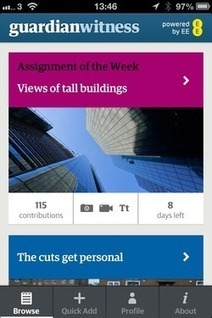
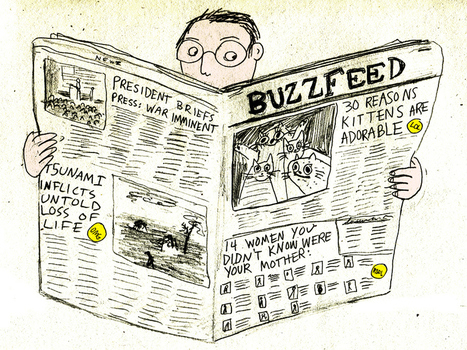

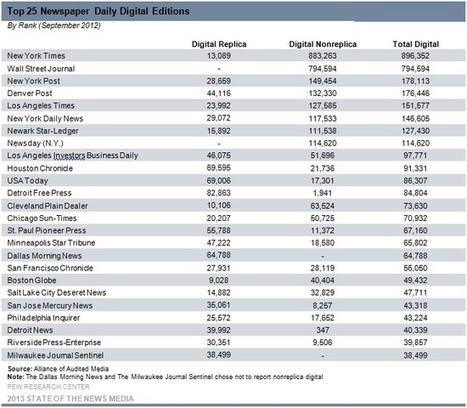

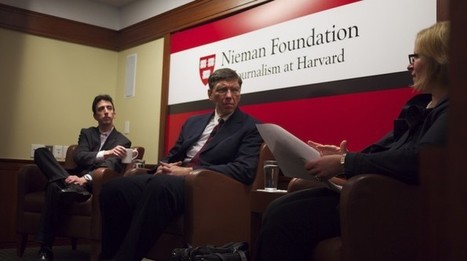


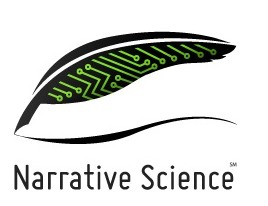
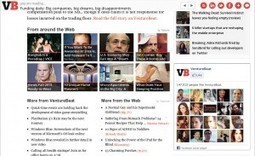







There are some valuable business lessons from these digital marketing success stories.